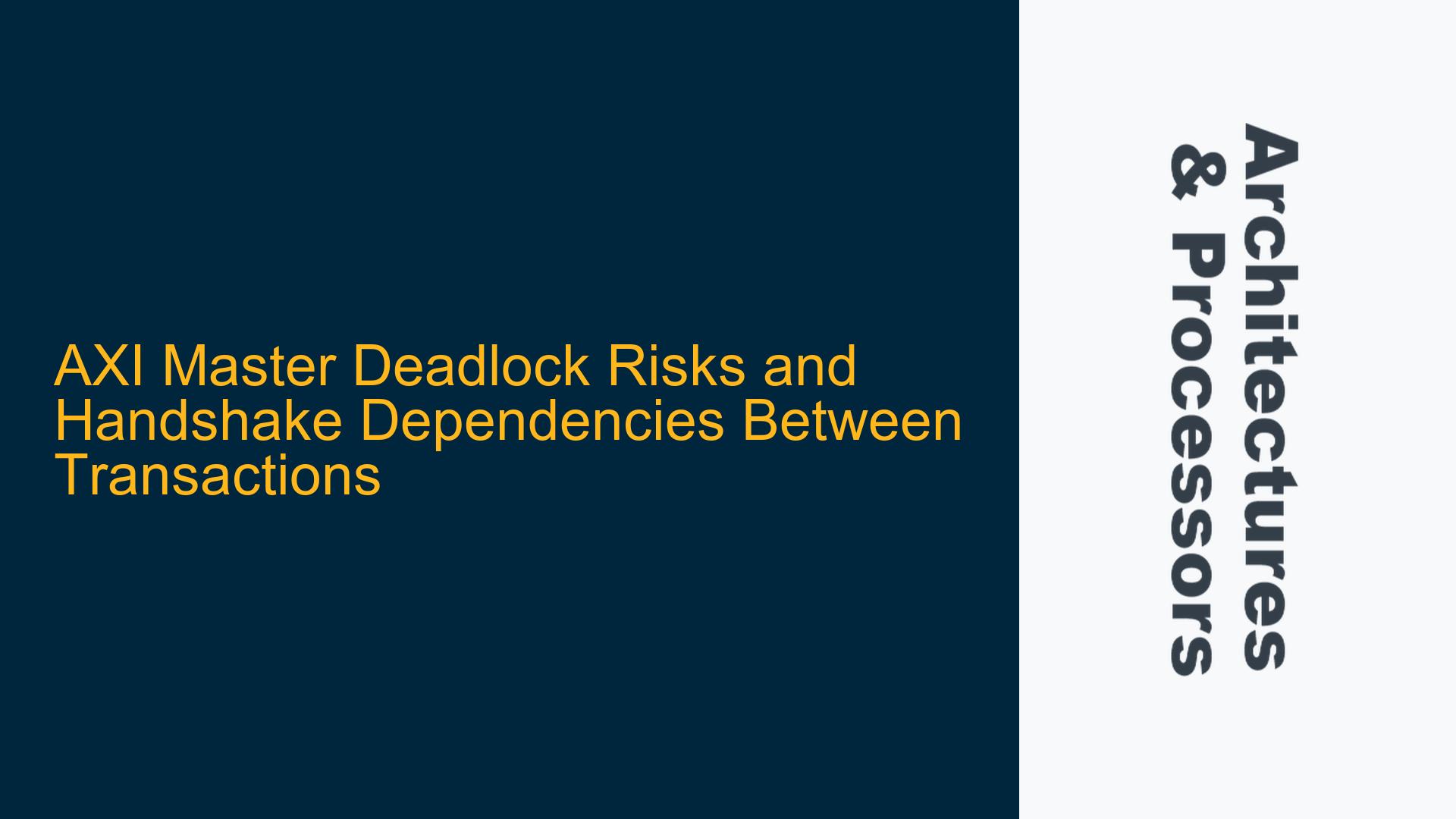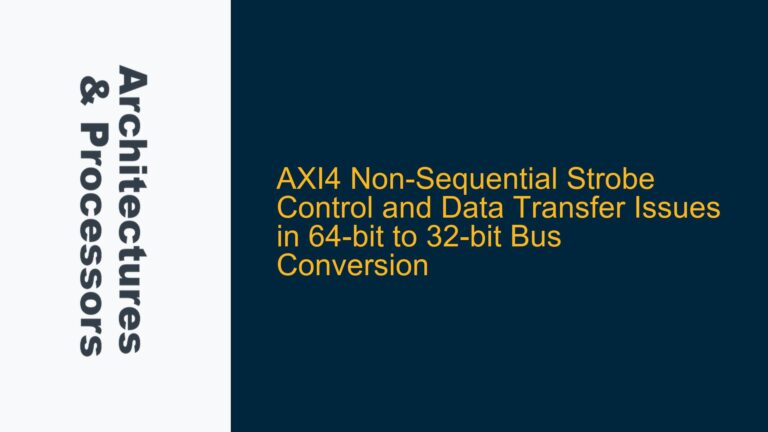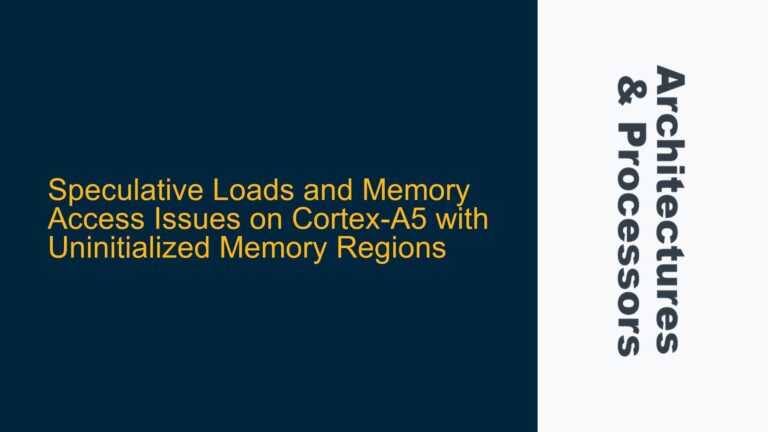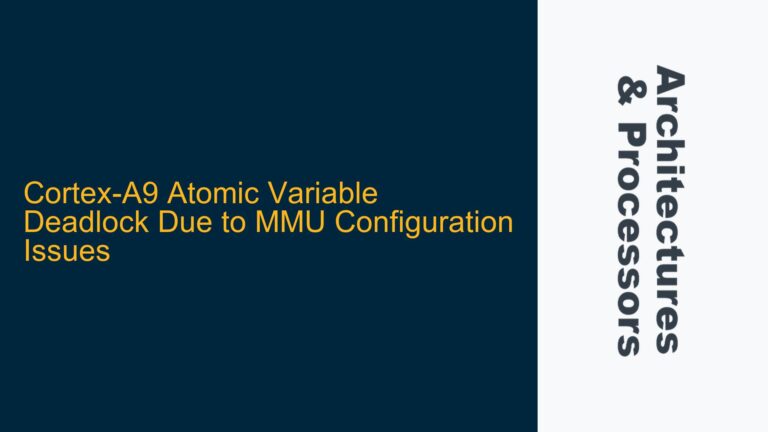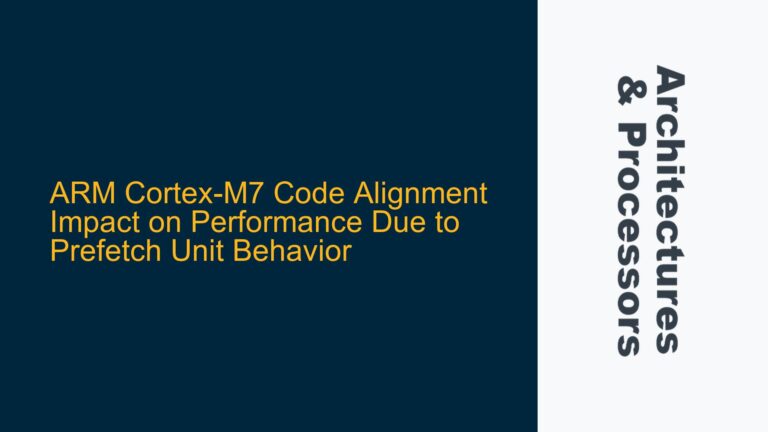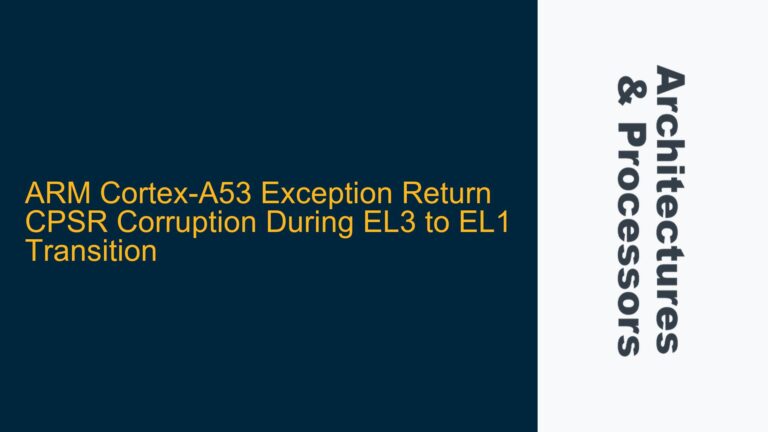AXI Protocol Handshake Rules and Deadlock Scenarios in Multi-Transaction Sequences
The AXI protocol defines strict rules for handshaking between the master and slave using the xREADY and xVALID signals to ensure data integrity and avoid deadlocks. A deadlock occurs when two or more transactions are waiting for each other to complete, resulting in a system stall. The AXI specification explicitly states that a master must not wait for the slave to assert AWREADY or WREADY before asserting AWVALID or WVALID within the same transaction. This rule prevents circular dependencies where the master and slave are both waiting for the other to act, leading to a deadlock.
However, the specification does not explicitly address dependencies between consecutive transactions. For example, if a master is handling a burst write transaction with AWLEN > 0, it may encounter a scenario where AWREADY is asserted for the first transaction, but WREADY remains de-asserted for some or all data beats. In this case, the master may consider stalling the assertion of AWVALID for the second transaction until all data beats of the first transaction are acknowledged by the slave. Similarly, if WREADY is asserted but AWREADY remains de-asserted, the master may delay asserting WVALID for the second transaction until AWREADY is asserted for the first transaction.
These scenarios raise questions about whether such dependencies violate the AXI protocol’s handshake rules and whether they could lead to deadlocks. The key concern is whether the master’s behavior in stalling signals across transactions could create a situation where the slave is also waiting for the master to act, resulting in a system-wide stall.
Potential Deadlock Risks in Multi-Transaction Handshaking
The primary risk in multi-transaction handshaking is the introduction of dependencies that are not explicitly covered by the AXI protocol. While the protocol ensures that deadlocks cannot occur within a single transaction, it does not provide the same guarantees for dependencies between consecutive transactions. This ambiguity can lead to implementation-specific behaviors that may inadvertently introduce deadlocks.
For example, if a master stalls AWVALID for the second transaction until all data beats of the first transaction are acknowledged, it assumes that the slave will eventually accept all data beats without requiring any information from the second transaction. However, if the slave’s design is such that it needs to know the address of the second transaction before it can accept all data beats of the first transaction, a deadlock could occur. The master would be waiting for the slave to accept all data beats, while the slave would be waiting for the master to provide the address of the second transaction.
Similarly, if the master delays asserting WVALID for the second transaction until AWREADY is asserted for the first transaction, it assumes that the slave does not require data from the second transaction to process the first transaction. If the slave’s design requires data from the second transaction to complete the first transaction, a deadlock could occur. The master would be waiting for the slave to accept the address of the first transaction, while the slave would be waiting for the master to provide data for the second transaction.
These scenarios highlight the importance of understanding the slave’s design and behavior when implementing multi-transaction handshaking in the master. Without a clear understanding of the slave’s requirements, the master’s behavior could inadvertently introduce deadlocks.
Implementing Safe Multi-Transaction Handshaking in AXI Masters
To avoid deadlocks in multi-transaction handshaking, the master must ensure that its behavior does not introduce dependencies that could lead to circular waits. This requires a thorough understanding of the AXI protocol’s handshake rules and the specific requirements of the slave being accessed.
First, the master should ensure that it does not stall AWVALID for the second transaction based on the WREADY status of the first transaction. The AXI protocol explicitly states that the master must not wait for the slave to assert WREADY before asserting AWVALID. This rule applies to both single and multi-transaction scenarios. By adhering to this rule, the master avoids creating a dependency where the slave might be waiting for AWVALID to be asserted before it can accept data beats.
Second, the master should avoid delaying WVALID for the second transaction based on the AWREADY status of the first transaction. While the AXI protocol does not explicitly prohibit this behavior, it is generally safer to assume that the slave does not require data from the second transaction to process the first transaction. By asserting WVALID for the second transaction independently of the AWREADY status of the first transaction, the master reduces the risk of introducing a deadlock.
Third, the master should implement a robust state machine that can handle multi-transaction sequences without introducing unnecessary dependencies. The state machine should ensure that each transaction is processed independently, with no cross-transaction dependencies that could lead to deadlocks. This includes ensuring that the master does not wait for the completion of one transaction before starting the next, unless explicitly required by the application.
Finally, the master should be designed to handle slow slaves gracefully. If the slave is slow to accept AW or W transfers, the master should be able to continue processing other transactions without stalling. This requires careful design of the master’s arbitration and scheduling logic to ensure that it can handle multiple outstanding transactions without introducing dependencies that could lead to deadlocks.
By following these guidelines, the master can implement safe multi-transaction handshaking that adheres to the AXI protocol’s rules and avoids deadlocks. This requires a deep understanding of both the protocol and the specific requirements of the slave being accessed, as well as careful design of the master’s state machine and arbitration logic.
Conclusion
The AXI protocol’s handshake rules are designed to prevent deadlocks within individual transactions, but they do not explicitly address dependencies between consecutive transactions. This can lead to implementation-specific behaviors that may inadvertently introduce deadlocks. To avoid these risks, the master must ensure that its behavior does not introduce dependencies that could lead to circular waits. This requires a thorough understanding of the AXI protocol’s handshake rules, the specific requirements of the slave being accessed, and careful design of the master’s state machine and arbitration logic. By following these guidelines, the master can implement safe multi-transaction handshaking that adheres to the AXI protocol’s rules and avoids deadlocks.
